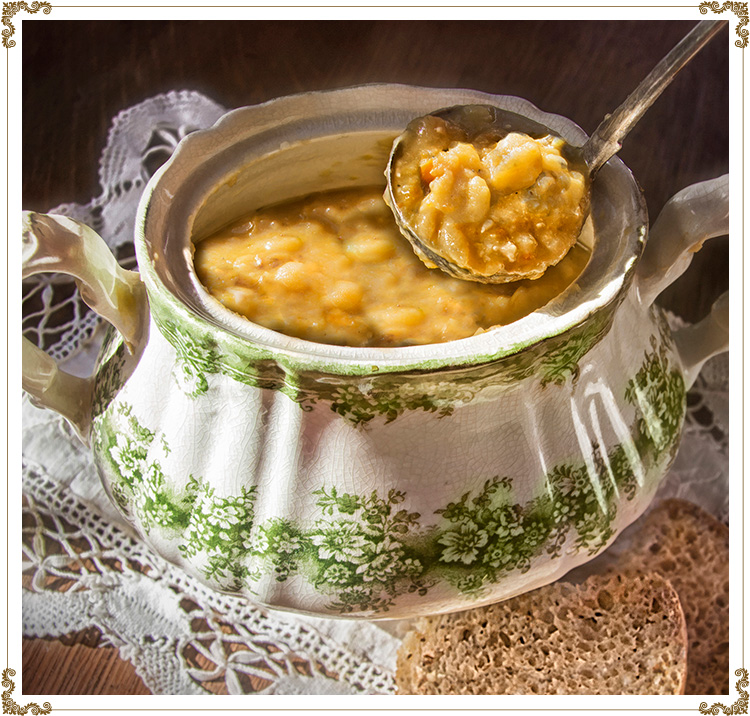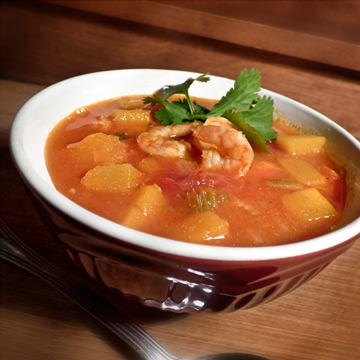Traditional pea soup Recipe Gluten-free, dairy-free (casein-free), hypotoxic and vegan
YIELD : 2 LITERS (8 CUPS)
ORGANIC INGREDIENTS
- 400 g (2 cups) dry yellow peas
- 2.5 liters (10 cups) water, for soaking
- 30 ml (2 tbsp) olive oil
- 2 yellow onions, finely chopped
- 160 g (1 ½ cup) celery, finely chopped
- 130 g (1 cup) carrots, finely chopped
- 3 liters (12 cups) water, for cooking
- 5 ml (1 tsp) dried savory
- About 7.5 cm (3 in) piece of kombu seaweed, rinsed (about 5 g) *
- 1 ml (1/4 tsp) pepper
- 3 bay leaves
- 5 ml (1 tsp) salt
- Optional: 15 ml (1 tbsp) of organic cornstarch diluted in 15 ml (1 tbsp) of water
PREPARATION
- Soak the peas in 2.5 liters (10 cups) of water for 12 hours (overnight), then drain.
- In a large saucepan, heat the oil then add the onions, celery and carrots.
- Cover and cook over low heat for about 10 minutes, stirring frequently.
- Add 3 liters (12 cups) of water, the peas (soaked and drained), the savory, the piece of seaweed, the pepper and the bay leaves. Bring to a boil, cover and simmer over low heat for 2 hours. Stir a few times during cooking (approximately every 30 minutes).
- Remove the cover, remove the piece of seaweed and simmer over medium heat for 1 hour or until the peas are tender. Stir frequently.
- Remove from heat, add salt, cover and let stand 2 hours. Adjust the seasoning to taste.
- After standing time, depending on the desired texture of your soup, you can gently bring it to a boil and add the cornstarch, stirring constantly with a whisk.

A great classic of our Quebec cuisine that is always reminiscent of meals at the sugar shack!
TIP
Pea soup always thickens as it cools; it is therefore normal that after the cooking time it seems more liquid than the desired final texture. Better to not evaporate too much of the excess water, at the risk of having a soup that’s too thick. The standing time is therefore important and if the soup is not consumed the same day, but refrigerated, it will thicken even more.
* Kombu algae, like all algae, is full of richness on several levels: minerals, trace elements and vitamins. Kombu seaweed is the most iodine-rich variety. “Added to grain dishes and soups, it enhances flavors because it contains glutamic acid, the natural version of MSG (monosodium glutamate). ”(From Renée Frappier's book Le Guide de l’alimentation saine et naturelle, tome 2, page 93). You can find it easily in health food stores and it will also be useful when cooking legumes because it tenderizes them and prevents gas.
















